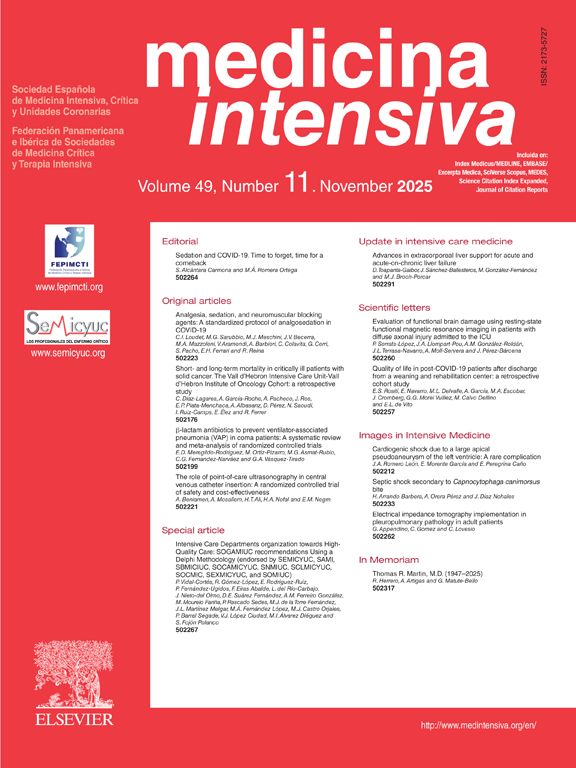We wish to thank the warm welcome to “Consensus document on tracheostomy in patients with COVID-19”1 and congratulate the authors on their quest for tools to reduce the risk of health professionals while managing these patients.
We agree that we should be extra-cautious with patients infected with SARS-CoV-2, especially while performing high-risk procedures. Specific recommendations on the use of personal protection equipment (PPE) for every particular clinical situation have been established. The risk of contagion involved in procedures like intubation, tracheostomy or bronchoscopy and the reduced availability of PPE has triggered the design of devices that act as barriers to reduce the risk of contagion.
The so-called “aerosol box” was initially designed to intubate patients with COVID-19 in an attempt to reduce the spread of unwanted aerosols.2 Its use has been controversial ever since with limitations like complexity in cases of difficult airways, limited movements for operators and technicians, difficulties placing or repositioning the device in emergency cases (even damaging the patient), reduced visibility, possibility of cross contamination if the device has not been properly disinfected or risk of contagion during its retrieval.3 Other barrier devices like plastic screens have been used with greater maneuverability and visualization or suction systems to reduce the viral load and spread of aerosols.
From these experiences different prototypes of devices have been developed. Their ergonomics, shape, size, and type of material have improved. Their initial design has changed and adapted to the actual clinical needs. Also, some of the limitations described above have been solved. The use of more flexible curve-shaped materials has improved visibility and avoided cleaning issues. New access ports have been added that technicians and assistants can use or sealing machines have been introduced to reduce the risk of viral particle spread or systems to increase the stability of the devices.4
The use of all these barriers has extended to procedures like tracheostomy (as the authors say) and other experiences.5 Actually, they improve the safety of one of the most risky and common procedures often performed during these months in patients with COVID-19.
Despite the continuous improvement in the design of these devices, the apparent greater safety and confidence of health professionals should not minimize the precautions that still need to be observed in the use of PPE and other standard protection measures. Therefore, health professionals should be properly trained in the use of these devices. Simulation can be an excellent tool to validate these devices during the training process of health professionals.
This necessary innovation in times of high tension and healthcare system collapse should consolidate in the near future to make sure that these medical devices are regulated, manufactured, assessed, and used according to common quality and safety standards and without new risks. To that end, multidisciplinary teams should provide their clinical experience and technological know-how to the design and manufacture processes of these devices.
Their implementation into the routine clinical practice should be accompanied by clinical results that prove their effectiveness reducing the rates of infection or the quantitative viral loads in PPE and in the environment without compromising the safety of the procedures for which they were designed in the first place.
FundingThe authors confirm that no funding was received while conducting this study.
Please cite this article as: Martín Delgado MC, Bernal-Sprekelsen M, Villalonga Vadell R. Respuesta a «Documento de consenso de la traqueotomía en pacientes con COVID-19». Med Intensiva. 2021;45:254–255.




